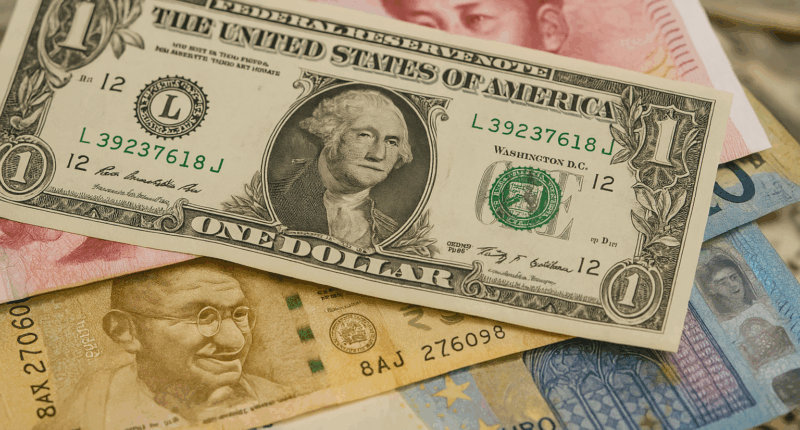The Indian Rupee traded flat on Monday morning, opening slightly lower by 9 paise to 85.41 against the U.S. dollar. This marked a small change from its previous close of 85.5050. Interestingly, most Asian currencies were tepid despite the dollar dipping after Moody’s downgraded the U.S. government’s credit rating on Friday.
The US Dollar Index, which measures the greenback against a basket of major currencies, fell 0.3% to around the 100.8 level. Global ratings agency Moody’s downgraded its investment grade rating on the U.S. by a notch over the country’s growing $36 trillion debt.
In another development, a key congressional committee has passed U.S. President Donald Trump’s sweeping tax-cut bill, which pushed U.S. treasury yields higher. According to analysts, the bill could add $3 trillion to $5 trillion to the nation’s $36.2 trillion in debt over the next decade.
According to a Reuters report, dollar-rupee forward premiums have also dipped on the back of higher U.S. Treasury yields. The 1-year dollar rupee implied yield fell 3 basis points to 2.06%, while the 1-year U.S. Treasury yield was up 2 bps in Asia trading.
Markets were also anticipating data from China, but that too failed to enthuse traders. China’s industrial production rose more than anticipated in April, with factory activity rising well despite pressure from heightened U.S. trade tariffs on exports. However, domestic demand showed signs of weakness, as retail sales for the month came in below expectations. The Chinese yuan’s offshore USD/CNH and the onshore USD/CNY pairs were both muted.
Only currency bucking the regional trend is the Japanese yen, which edged higher on Monday, on the back of expectations of a Bank of Japan rate hike.





